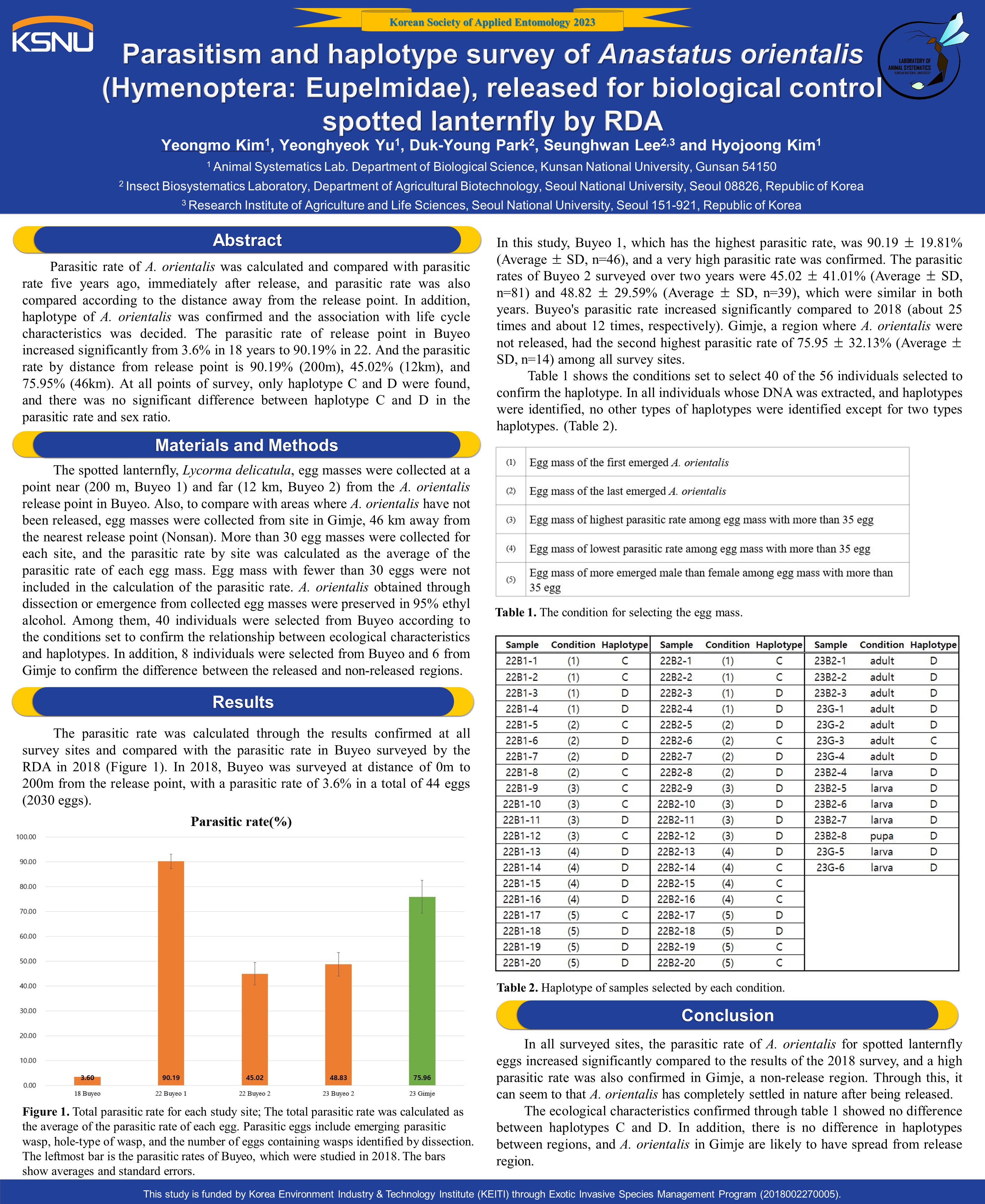
<.>
INTERAGENCY AGREEMENT WORK PLAN
Plant Protection and Quarantine, Science and Technology
and
USDA ARS Beneficial Insects Introduction Research Unit
Title: Development of biological control methods for control of spotted lanternfly
Prior Year Agreement Number: IAA 0000229-190846
Period of Performance: June 15, 2021 – September 30, 2022
I. Introduction
This Work Plan reflects an interagency working relationship between USDA Agricultural Research Service (ARS) Beneficial Insects Introduction Research Unit and Animal and Plant Health Inspection Service (APHIS), Plant Protection and Quarantine (PPQ). It outlines the project specific goals, objectives, and anticipated accomplishments as well as the approach for conducting conduct foreign exploration to discover parasitoids that attack spotted lanternfly in China and import them into U.S. quarantine facilities for further research to develop potential biocontrol agents and the related roles and responsibilities of the parties as negotiated.
II. Background
The primary purpose of this agreement is to develop biological control agents for application against spotted lanternfly (SLF, Lycorma delicatula). This pest is an exotic invasive planthopper that was discovered in Berks County Pennsylvania in 2014 and has since spread extensively within Pennsylvania, as well as to neighboring states. Hitchhiker individuals and dead specimens have also been found in other states, indicating that populations of SLF continue to disperse from the core infestation. SLF threatens the grape, hops, tree fruit, plant nursery and timber industries. SLF feeding causes direct damage by removing sap, but indirect damage also occurs because black sooty mold grows on the copious honeydew excreted by nymphs and adults. Quarantines have been put in place to restrict the movement of plant, wood and stone products, but because egg masses are cryptic and it is difficult to regulate the movement of all items potentially harboring them, quarantines have not effectively stopped its dispersal. Recent research on host plant utilization indicates that spotted lanternfly can develop to the adult stage on several host plant species in addition to its favored host, tree-of-heaven (Ailanthus altissima), which confounds the eradication efforts based on using tree-of-heaven as trap trees. A biocontrol program is needed to contribute to management efforts against the spotted lanternfly.
Preliminary surveys for native natural enemies have not yet shown any predators or parasitoids that can significantly impact SLF populations in the U.S., but previous research has shown that several Asian parasitoid wasps attack SLF eggs and nymphs in its native range of China, where they cause significant mortality of SLF. If continued surveys in the U.S. do not show that native natural enemies are adapting to SLF, a classical biological control program to release and establish effective Asian natural enemies will be needed. Continuing collaborative research focuses on investigating the biology (longevity, fecundity, life-cycle, etc.) for these species as it informs our understanding of their efficacy in a biocontrol program, developing rearing techniques (especially initiating and breaking diapause for storage), and determining if any non-target insects native to the United States would be at risk if they were to be released.
Foreign exploration has been conducted by APHIS and ARS and Chinese cooperators during the past several years throughout the range of spotted lanternfly in China, with emphasis on collections in natural areas where tree-of-heaven is abundant. To date we have discovered two potential biocontrol agents: Anastatus orientalis (an egg parasitoid) and Dryinus sinicus, which attacks lanternfly nymphs. Depending on the local site circumstances (host plant, lack of pesticide use, etc.) parasitism rates from these parasitoids can be high. We have now discovered that our collections of A. orientalis consist of multiple haplotypes. Host specificity testing is almost complete for one of these haplotypes and suggests that it is insufficiently host specific, but we now need to investigate the other haplotypes. Further research in China is needed to determine whether additional cryptic species of Anastatus may occur on SLF. In addition, field surveys and laboratory host choice studies of the host range of these parasitoids in China are needed to contribute to our assessment of likely host range in the U.S. In 2018 and 2019, we collected Dryinus sinicus individuals as adults from Beijing and within parasitized SLF nymphs and brought them to quarantine in the U.S. to start a rearing colony. We faced many challenges in developing a colony but now are getting reparasitism in our laboratory setting. Our efforts to collect and rear Dryinus will be informed by previous research with other dryinid parasitoids. Further field collections in China and U.S. research on the biology, rearing, and host specificity testing of Dryinus species is needed.
- 첨부 : 전체다운
-
김영모2023포스터(추계).jp...

 이전글 이전글 |
미개척분류군 인력양성사업 - 국립생물자원관2021-07-27 |
|---|---|
다음글  |
해외유입 감염병 매개모기의 추적 마커 개발 - 질병관리청2021-07-27 |








